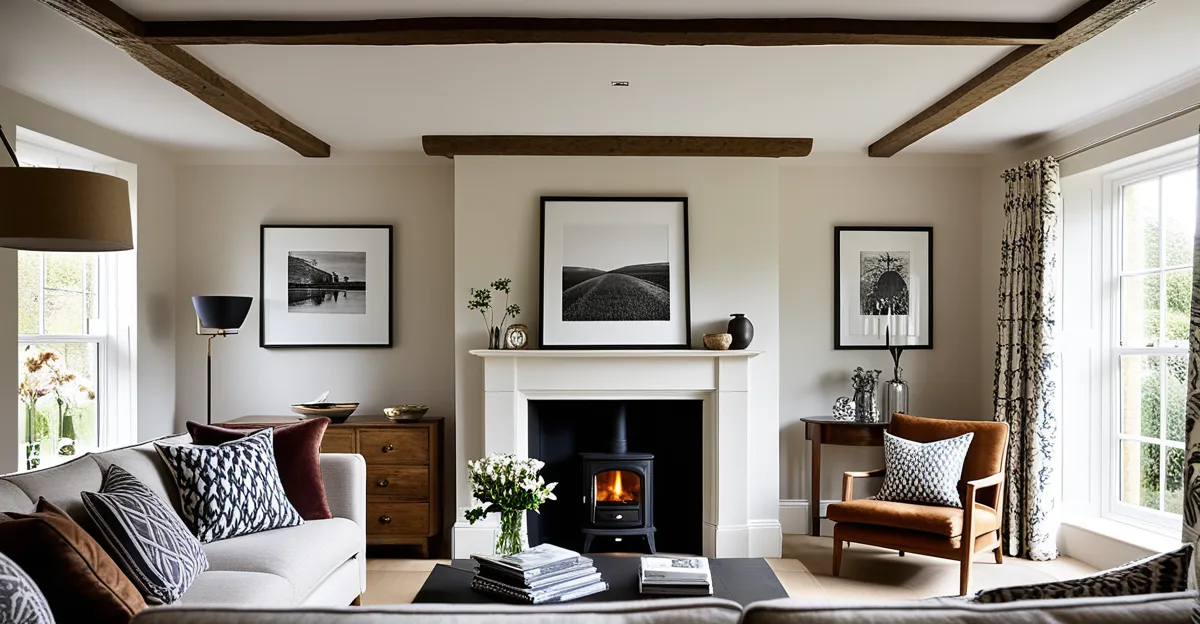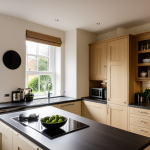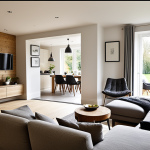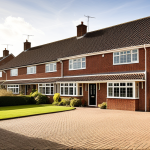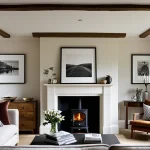Achieving Balance Between Tradition and Modernity in UK Interiors
Striking the right balance when blending styles UK home owners often face is essential for cohesive interiors that feel both timeless and fresh. The challenge lies in harmonising elements where traditional meets modern without either style overpowering the other. This balance ensures spaces feel unified and comfortable, rather than disjointed or confused.
Key to this approach is recognising distinct features: traditional UK homes often showcase classic mouldings, detailed woodwork, and rich textures, while modern interiors emphasize clean lines, minimalist forms, and open spaces. Embracing these characteristics allows for a thoughtful fusion where original period charm complements contemporary simplicity.
Also read : How Can You Transform Small Spaces in UK Homes for Maximum Comfort?
Adaptation also depends on the home’s age and style. In period properties, emphasis usually centres on preserving heritage features while introducing modern conveniences subtly, ensuring updates respect the home’s character. Conversely, more contemporary spaces can incorporate traditional accents strategically—such as patterned fabrics or ornamental lighting—to add warmth and history without disrupting a modern layout.
Ultimately, achieving balance is about purposeful selection rather than mixing for its own sake. By carefully integrating familiar, classic details with forward-looking design, UK interiors successfully create spaces where tradition meets modern style in a way that feels seamless and inviting.
Have you seen this : What are the best ways to incorporate natural light into a UK home?
Combining Colours, Textures, and Materials Thoughtfully
Blending styles UK home interiors rely heavily on a modern-traditional colour palette to unify diverse elements. Choosing colours that harmonise both traditional and modern schemes is crucial. For example, soft neutrals like warm greys or creams provide a seamless backdrop that complements both classic wood tones and sleek contemporary finishes. Accents in muted blues or greens can further bridge the divide, adding personality without clashing with original features.
Texture mixing plays a pivotal role in creating cohesive interiors. Integrating tactile contrasts—such as pairing smooth metals with rich wood grain or combining linen fabrics with leather—enhances visual interest and depth. This layering technique softens transitions between the old and new, guiding the eye naturally across the space.
Selecting UK interior materials thoughtfully ensures authenticity and durability. Original woodwork, often a hallmark of traditional homes, should be preserved or sympathetically restored to maintain character. In contrast, modern finishes like glass, polished steel, or concrete can introduce clean lines and reflectivity. When combined mindfully, these materials create a balanced dialogue where traditional meets modern in texture and substance, rather than merely form. This deliberate approach helps rooms feel curated yet comfortable, bridging eras with style and practicality.
Choosing Furniture and Decor that Unites Two Eras
Blending styles UK home interiors thrive on furniture pairing that bridges past and present seamlessly. Antique or period decor UK pieces—such as elegant Victorian chairs or ornate cabinets—imbue rooms with history and authenticity. When combined thoughtfully with streamlined contemporary accents, these elements avoid visual clutter and create dynamic, balanced spaces. For instance, a sleek modern sofa paired with a restored Georgian side table achieves harmony by contrasting simplicity with detail.
Many homeowners seek UK brands or artisans specialising in bespoke statement items. These custom pieces often blend traditional craftsmanship with modern forms or materials, reinforcing the fusion of eras. Selecting one or two standout items ensures that decor remains curated and intentional rather than overwhelming.
Art and décor provide further opportunities for cohesion. Abstract paintings or minimalist sculptures alongside classical frames or vintage rugs introduce contrast but still uphold a thoughtful, unified design. This approach reflects a mature understanding of how traditional meets modern, allowing each era to shine while supporting overall cohesive interiors.
By prioritising quality over quantity and respecting scale, the resulting environment feels both inviting and timeless—an ideal outcome when blending styles UK home interiors demand.
Showcasing UK Period Features with Modern Enhancements
Balancing period feature restoration with contemporary updates is crucial for achieving true architectural harmony in UK interiors. Fireplaces, intricate mouldings, and original floors serve as authentic anchors, grounding spaces in their historical context. Restoring these elements involves careful cleaning, repairing, and sometimes repainting in period-appropriate colours, preserving character without overshadowing modern elements.
Modern updates in a UK home can include discreetly integrated LED lighting to highlight wood panelling or cornices, adding warmth while respecting original craftsmanship. Similarly, subtle technology installations—like smart thermostats or underfloor heating—can improve comfort without disturbing heritage aesthetics. This approach answers how to merge period features with functionality: by blending preservation with invisible enhancements that enhance day-to-day living.
For listed buildings, balancing restoration and modernization requires sensitivity to restrictions. Homeowners often engage conservation experts to ensure updates comply with regulations while enhancing the property’s usability. This careful process safeguards architectural value while embracing evolving lifestyle needs.
In essence, showcasing period features alongside modern enhancements captures the essence of traditional meets modern design in UK homes. It celebrates history while inviting contemporary comfort, creating cohesive interiors where each era supports the other beautifully.
Achieving Balance Between Tradition and Modernity in UK Interiors
Striking the right balance is vital when blending styles UK home interiors to create truly cohesive interiors. Without this, spaces risk appearing fragmented or mismatched. The key lies in identifying the clear distinctions between traditional meets modern. Traditional features often include ornate cornices, rich wood tones, and period fireplaces. Modern styles favour uncluttered layouts, neutral colour schemes, and minimalist furnishings.
Adapting this blend depends heavily on the property’s nature. For period homes, it’s crucial to preserve defining architectural elements while integrating modern comforts subtly. This keeps the home’s authentic character intact, showcasing how traditional meets modern under one roof. In contrast, newer builds allow more flexibility to incorporate classic accessories or textures that introduce warmth and heritage without conflicting with contemporary design.
Understanding the relationship between these styles helps homeowners avoid random mixing. Instead, the goal is a thoughtful curation where both eras coexist harmoniously, resulting in interiors that feel welcoming and timeless. This approach not only respects the history of UK homes but also embraces evolving lifestyles, leading to balanced, elegant environments.

